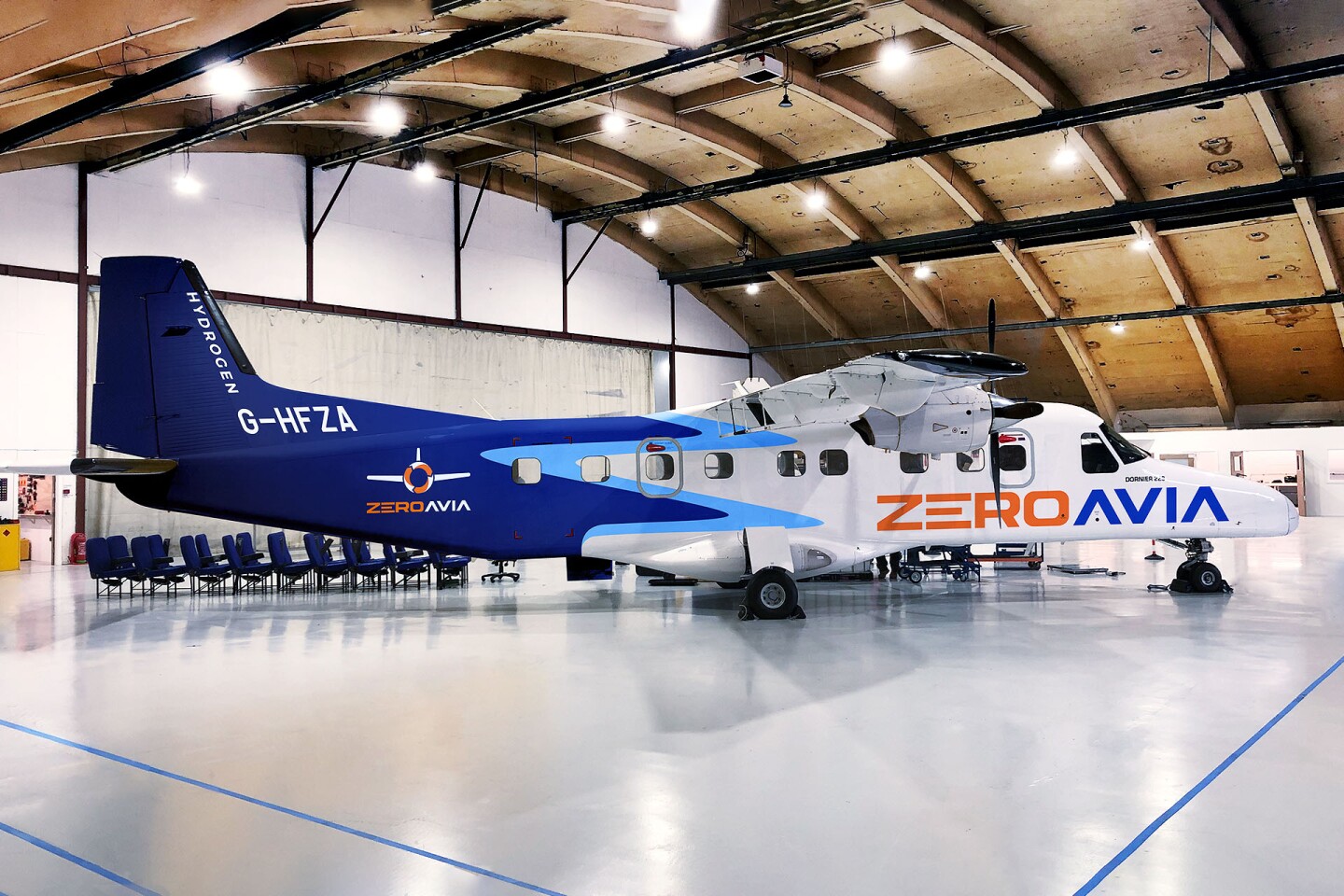ZeroAvia has declared the launch of its biggest zero-emissions H2 aircraft yet: a 76-seat airliner that it is making in collaboration with Alaska Airlines. It will be ready for flight in 2023 and the commercial flight between London and Rotterdam will fly in 2024.
The Hague airport will accommodate 19 people and the fight will be the first commercial, international hydrogen one in the world.
This project is bigger than the 40-seat Dash-8 that Universal Hydrogen is working on, or the 40-seat Dornier 328 being developed by H2Fly and Deutsche Aircraft.

The new plane is called the De Havilland Q400 turboprop and it will be retrofitted with ZeroAvia’s biggest hydrogen powertrain yet, designated the ZA2000 and capable of scaling between 2-5 MW of power output, depending on the configuration. “We’ll have first ground tests of that next year, and the first flight, probably in 2023,” ZeroAvia’s Val Miftakhov stated.
The regular Q400 takes 90 passengers, and the full jet fuel tank can cover around 2,040 km (1,268 miles). The hydrogen model will accommodate 76 passengers, and its target range is closer to 800 km (500 miles). This will be a huge leap in green flights.
“500 miles of range with a full passenger payload, that’s pretty decent,” says Miftakhov. “It covers the vast majority of the legs these aircraft fly. It’s less than half their maximum fuel range, but it’ll still be a successful commercial aircraft.”
ZeroAvia will need to move to higher-density fuel in the form of cryogenic liquid hydrogen. The company is also working simultaneously on a liquid hydrogen powertrain that is aimed to be open for testing this year.

Miftakhov states, “Well, it’s rocket science,” he tells us. “But it’s rocket science that’s been done, right? We’re actually working with a couple of partners on that, we’ll have some liquid hydrogen tests later this year. We’ll see if those will be flight tests or ground tests of the flight hardware, but it’s a matter of timing; if it’s not next year, it’ll be the year after. 2026 is our target for that as a commercial product.”
“For fixed-wing aircraft – at least, for turboprops – our approach is not to have any batteries at all,” he tells us.
“Our targets for the fuel cell systems in these aircraft are anywhere between 1.5-2 kW/kg in terms of power density. You need to use pretty fancy batteries to beat that. They tend to be either heavy or volatile, and you don’t get a lot of cycles out of them. And from the cell level to the system level, you have something like a 40 percent mass overhead from things like the BMS, the fire suppression, the cooling, and the separator walls you need to isolate the cells so they can’t take out the whole battery if they catch fire. Our ideal situation is if we just don’t have any batteries at all.”


